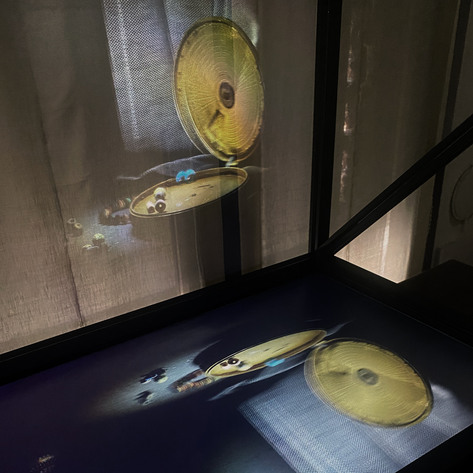Wunderkammern : Greed
Date: 17th May 2023Dimensions(m) 523mm, 331mm, 331mm
The second of a series of impossible assemblages of artefacts, vignettes and insects questioning the appropriation of culture and the trade in knowledge and power.
The project focusses on the contested history of Murano glass and its implication within the horrors of the trans-atlantic slave trade.
Competition during the 18th century forced slave traders to search for an assortment of barter cargo that would attract the preferential attention of the African suppliers of slaves. An enterprising group of Liverpool slave traders that formed William Davenport & Co. rose to the occasion and in three years became the supplier of half of all the glass beads re-exported to Africa from England.
The trade beads were primarily the products of Venice where the glass bead sector grew from at least 7% to over 70% in value of total Venetian glass exports from the late 16th to the late 18th century. While the sale of glassware in Venice slumped due to competition from other European producers, the bead industry prospered and manufactured tens of millions of units of conterie and perle a lume beads per year during the second half of the 18th century. Beads from this period are still collected and are present within many global private and museum collections. The impotus for their commissioning is rarely explained.
The artwork is one of a series of studies playing with reconstruction of impossible assemblages. The realisation of this work with the original artefacts, would be politically challenging and physically improbable. Using custom auto-stereoscopic screens, this latest experiment in holography, imagined the illusionary construction of uncomfortable narratives and the virtual repatriation of contested artefacts.
Materials:8-channel video presented on Alioscopy Lenticular Screens and viewed though custom-built pepper’s ghost vitrines.



